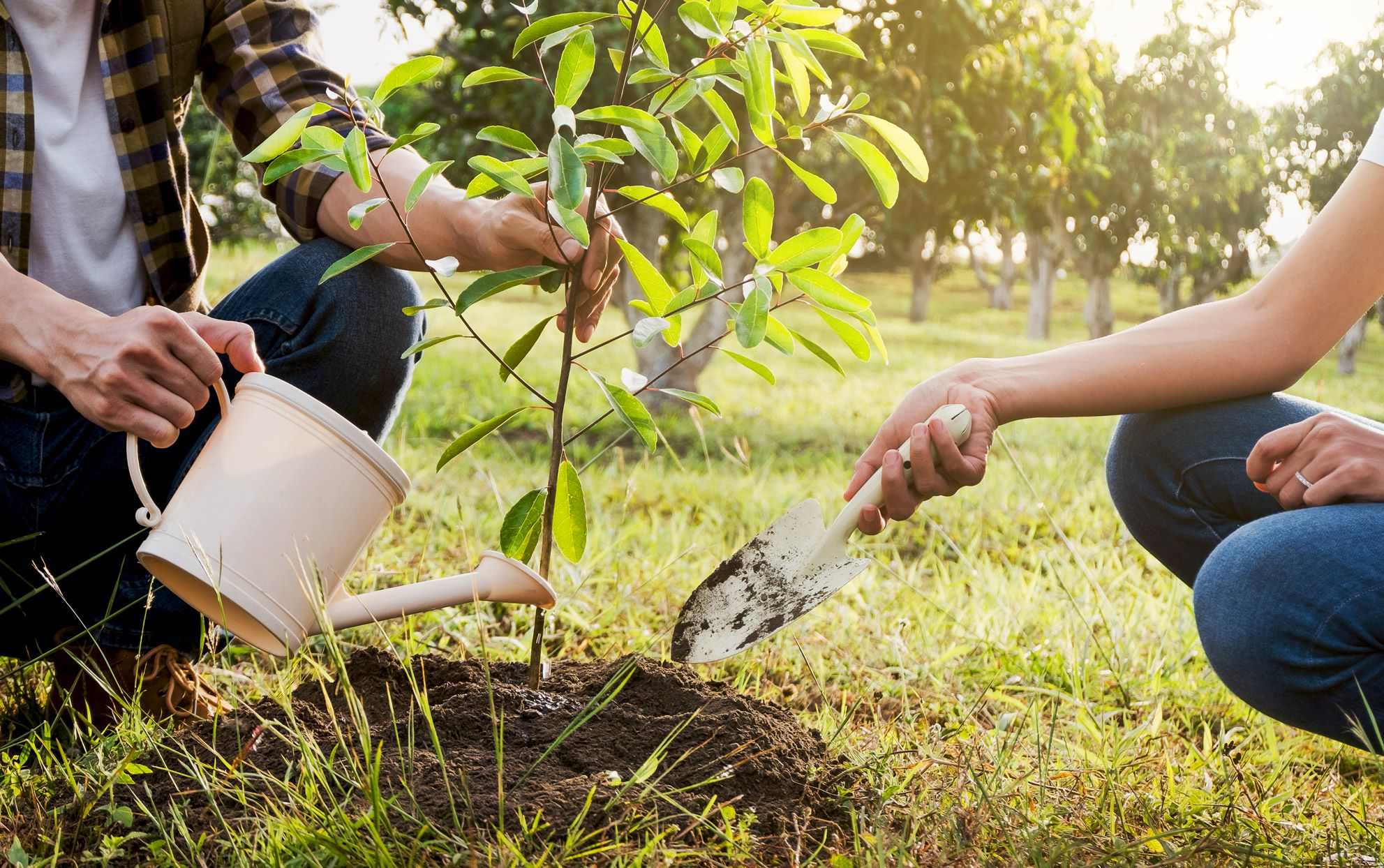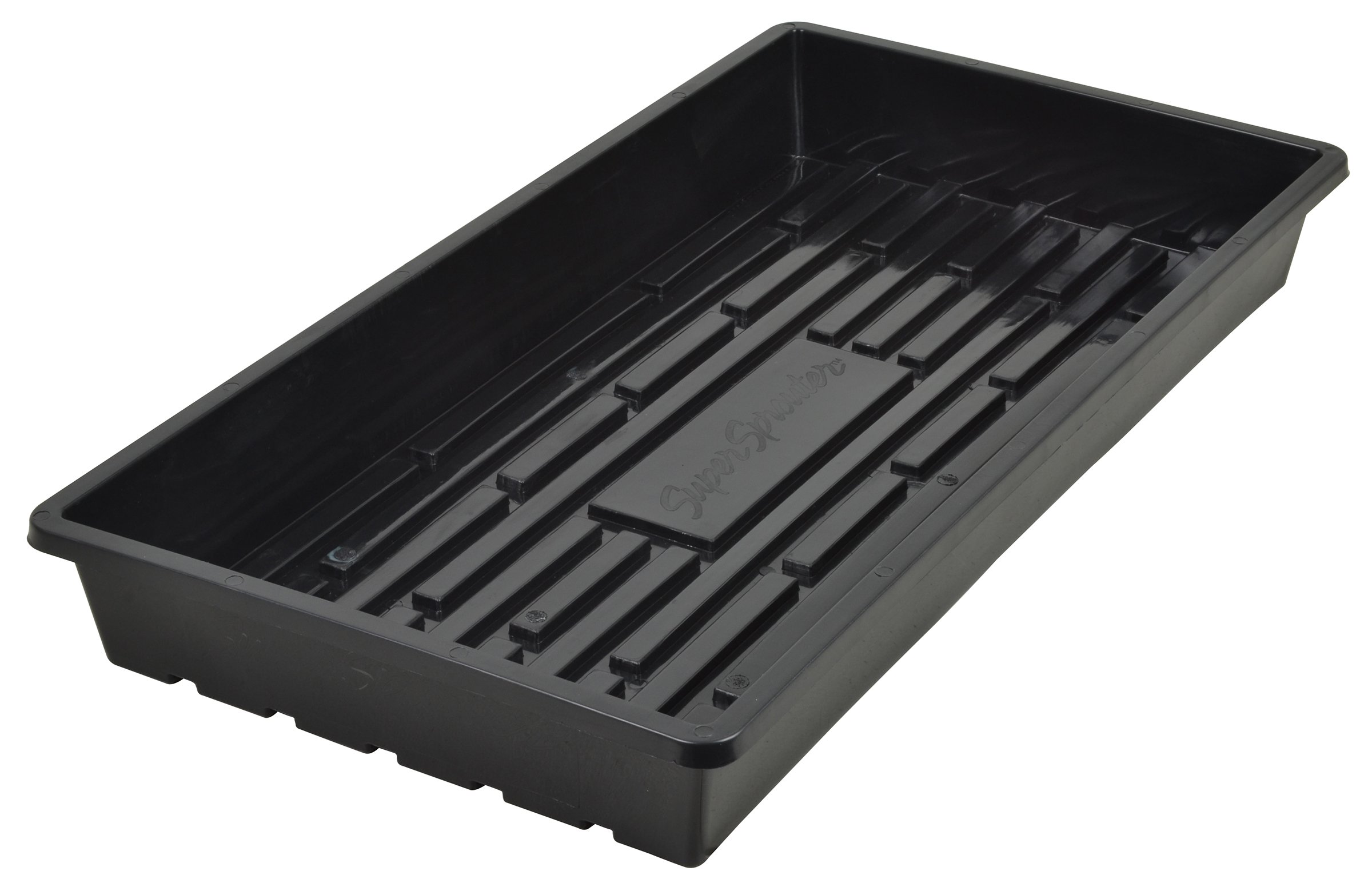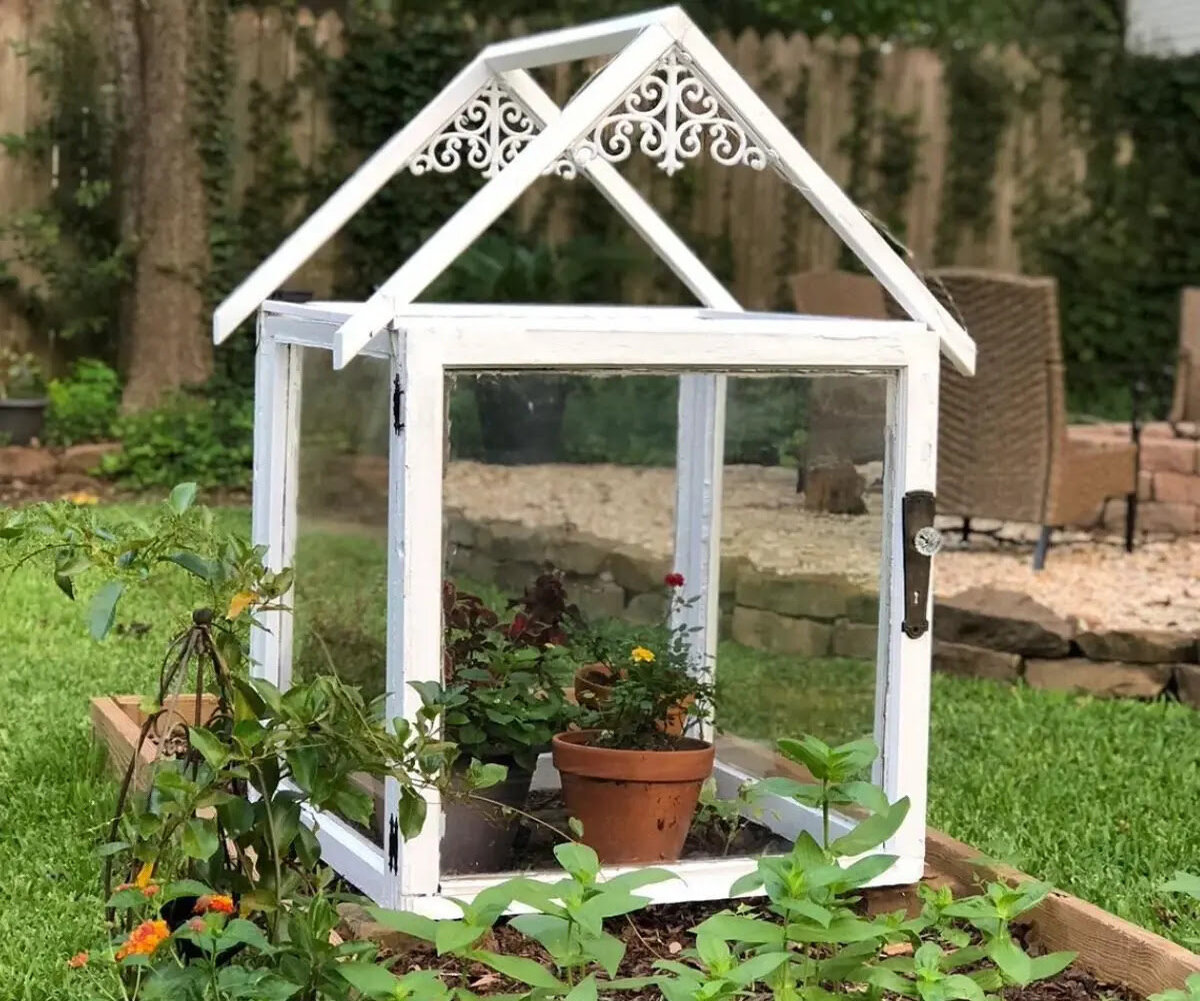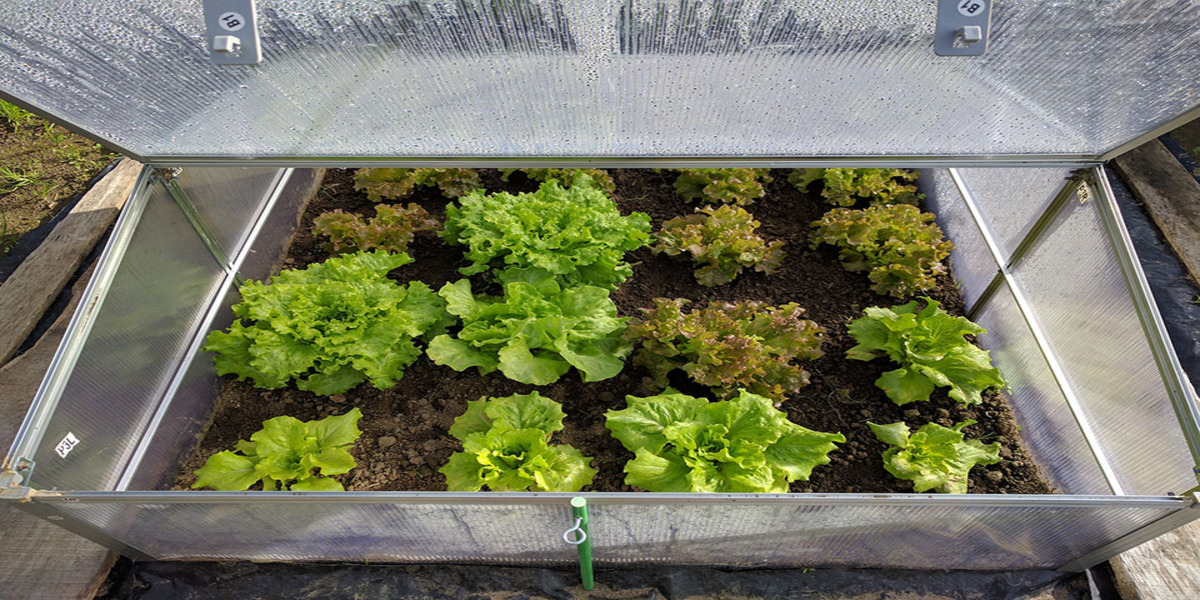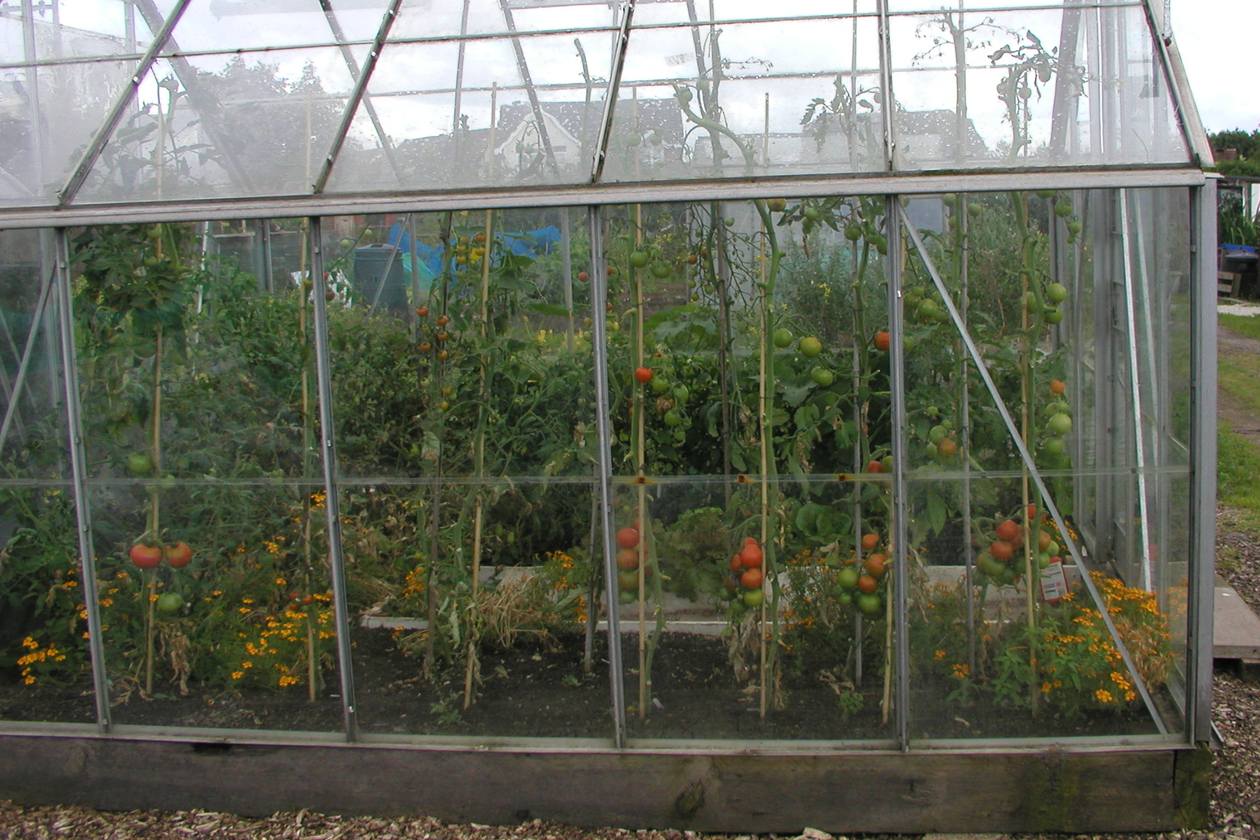Home>Gardening Techniques>What Are The Best Plants To Grow In A Greenhouse
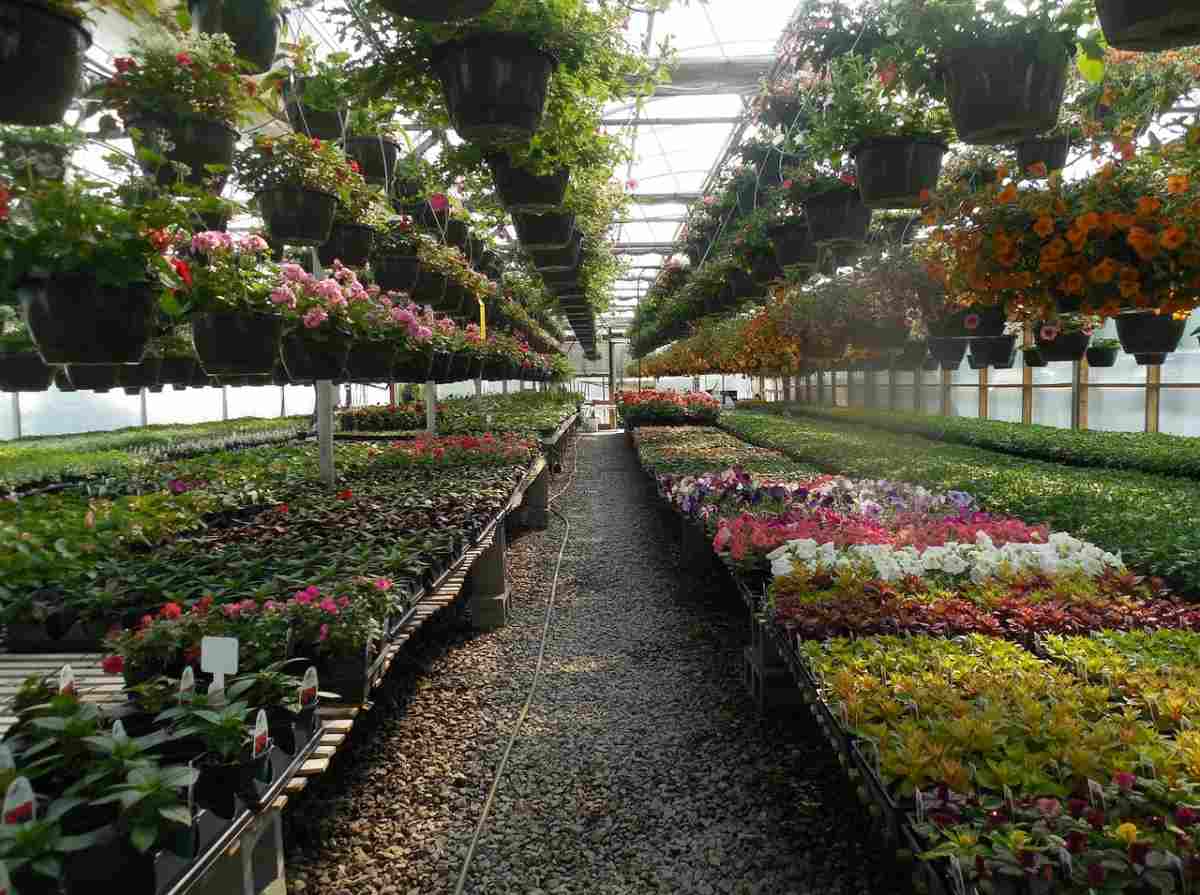

Gardening Techniques
What Are The Best Plants To Grow In A Greenhouse
Modified: January 22, 2024
Discover the best plants to grow in a greenhouse and enhance your plant care skills. Explore various species that thrive indoors and create a flourishing greenhouse garden.
(Many of the links in this article redirect to a specific reviewed product. Your purchase of these products through affiliate links helps to generate commission for Chicagolandgardening.com, at no extra cost. Learn more)
Table of Contents
Introduction
Welcome to the wonderful world of greenhouse gardening! Whether you are a seasoned plant enthusiast or a beginner looking to embark on a new plant care journey, a greenhouse is a fantastic tool for your green thumb. With its controlled environment, a greenhouse provides the ideal conditions for plants to thrive.
Greenhouses offer numerous benefits that can greatly enhance your gardening experience. They allow you to extend the growing season, protect plants from harsh weather conditions, and control pests and diseases. They also provide a stable and consistent environment, ensuring that your plants receive the right amount of sunlight, temperature, and humidity.
However, choosing the right plants for your greenhouse can seem like a daunting task. With so many options available, it can be overwhelming to decide which plants will best suit your needs and preferences. Luckily, we are here to guide you through the process!
In this article, we will explore the best plants to grow in a greenhouse. Whether you’re interested in cultivating flowers, vegetables, herbs, fruits, or even succulents, we’ve got you covered. We will highlight the key factors to consider when selecting plants for your greenhouse, providing you with the knowledge and confidence to create a thriving plant haven.
So, get ready to discover the world of greenhouse gardening and uncover the perfect plants to fill your sanctuary. Let’s dive in!
Benefits of Growing Plants in a Greenhouse
Growing plants in a greenhouse offers a plethora of advantages that can take your gardening experience to the next level. Let’s explore some of the key benefits:
Extended Growing Season: One of the biggest advantages of a greenhouse is the ability to extend the growing season. Greenhouses provide a controlled environment where you can start planting earlier in the spring and continue growing plants well into the fall. This means you can enjoy fresh produce and vibrant flowers for a longer period of time.
Protection from Harsh Weather: Greenhouses act as a shield, protecting your plants from unpredictable weather conditions. Whether it’s heavy rain, strong winds, or frost, a greenhouse provides a safe haven for your plants. This protection allows your plants to thrive without the risk of being damaged or destroyed by harsh elements.
Controlled Environment: With a greenhouse, you have the power to control various environmental factors such as temperature, humidity, and light. This level of control enables you to create the perfect conditions for your plants to grow and flourish. You can adjust the temperature to suit specific plant requirements, regulate humidity levels, and provide optimal light exposure by using techniques like shading or supplemental lighting.
Pest and Disease Control: Greenhouses offer a barrier against common pests and diseases that can wreak havoc on your plants. By keeping your plants enclosed, you can significantly reduce the risk of infestations. Additionally, the controlled environment of a greenhouse makes it easier to implement preventive measures like proper ventilation, sanitization, and the use of natural pest control methods.
Higher Yield and Quality: In a greenhouse, plants receive consistent care and attention, resulting in higher yield and better-quality produce. The controlled environment ensures that plants receive optimal nutrients, water, and light, which translates into healthier and more productive growth. With a greenhouse, you can harvest greater quantities of delicious vegetables, vibrant flowers, and flavorful herbs.
Year-Round Gardening: Depending on the climate in your area, a greenhouse can enable year-round gardening. By creating the ideal conditions within the greenhouse, you can continue growing plants even during the winter months. This not only provides you with a continuous supply of fresh produce but also keeps you connected to nature throughout the year.
As you can see, growing plants in a greenhouse offers a multitude of benefits that can significantly enhance your gardening journey. From extending the growing season to providing a controlled environment and protecting your plants, a greenhouse opens up endless possibilities. So, let’s explore the exciting world of greenhouse gardening and discover the perfect plants to cultivate in this nurturing environment.
Factors to Consider Before Choosing Plants
Before you start selecting plants for your greenhouse, it’s essential to consider a few key factors to ensure successful growth and cultivation. Here are some important factors to keep in mind:
Space Availability: Assess the available space in your greenhouse and determine how much area you can allocate to different types of plants. Consider the height, width, and growth habit of each plant to ensure they have enough room for proper development. Plan your layout accordingly to maximize space utilization.
Light Requirements: Different plants have varying light requirements. Assess the amount of natural light your greenhouse receives throughout the day and determine which plants will thrive in those conditions. Consider the orientation of your greenhouse and any shading factors that may affect light penetration. You can also supplement natural light using artificial lighting systems if needed.
Temperature and Humidity: Optimal temperature and humidity levels are crucial for plant growth. Evaluate the temperature fluctuations in your greenhouse and choose plants that can thrive within that range. Consider the need for additional heating or cooling systems to maintain stable temperatures. Likewise, assess the humidity levels and select plants that can tolerate the humidity within your greenhouse.
Watering and Drainage: Evaluate your watering system and ensure that it can meet the requirements of the plants you intend to grow. Some plants may require more frequent watering, while others prefer drier conditions. Additionally, assess the drainage capabilities of your greenhouse to prevent waterlogging and root rot.
Growing Season: Consider the length of your growing season and choose plants that can mature within that timeframe. Some plants have longer growing periods and may not be suitable if your greenhouse experiences shorter seasons. Alternatively, you can choose fast-growing varieties or opt for plants that can be harvested in stages.
Pest and Disease Resistance: Assess the common pests and diseases in your area and select plants that are more resistant to them. This will help minimize the need for chemical interventions and make maintenance easier. Additionally, consider companion planting techniques to naturally repel pests and boost plant health.
Your Gardening Goals: Lastly, consider your personal gardening goals and preferences. Do you want to grow vegetables for a sustainable kitchen garden? Or perhaps you’re more interested in cultivating a vibrant display of flowering plants? Understanding your goals will help you select plants that align with your vision and bring you the most joy.
By considering these factors, you can make informed decisions when choosing plants for your greenhouse. Take the time to plan and research, and remember that experimentation and learning are part of the gardening journey. Now, let’s explore some wonderful plant options for your greenhouse, from beautiful flowers to mouth-watering vegetables.
Flowers
Adding flowers to your greenhouse can bring vibrant colors, delightful scents, and a touch of beauty to your space. Here are some popular flower options that thrive in greenhouse environments:
1. Orchids: Orchids are exquisite and elegant flowers that flourish in a greenhouse due to their need for consistent temperature, humidity, and diffused light. With their unique shapes, stunning colors, and long-lasting blooms, orchids make a captivating addition to any greenhouse.
2. Roses: Roses are classic and timeless flowers that can thrive in a greenhouse with the right care. They prefer a warm and sheltered environment, making a greenhouse an ideal choice. There are numerous rose varieties available, each offering its own color, fragrance, and growth habit.
3. Geraniums: Geraniums are known for their colorful blossoms and hardy nature. They can tolerate a wide range of temperatures and thrive in a greenhouse setting. With their attractive foliage and abundance of blooms, geraniums add a pop of color and charm to any greenhouse.
4. Begonias: Begonias are known for their beautiful and varied foliage, as well as their captivating blooms. These plants prefer a warm and humid environment, making them perfect greenhouse companions. With their striking patterns and vibrant colors, begonias are sure to catch the eye and create a stunning display.
5. Camellias: Camellias are prized for their glossy evergreen leaves and exquisite blooms. They thrive in a greenhouse environment due to their preference for stable temperatures and indirect light. With their large, showy flowers and long blooming season, camellias make a statement in any greenhouse.
6. African Violets: African violets are charming and compact flowering plants that add a touch of elegance to any greenhouse. They prefer slightly lower light conditions and can thrive in the controlled environment provided by a greenhouse. With their delicate flowers in various shades of purple, pink, and white, African violets are a must-have for indoor gardeners.
7. Jasmine: Jasmine is prized for its delicate white flowers and intoxicating fragrance. It thrives in warm and humid conditions, making it an excellent choice for greenhouse cultivation. The aromatic blooms of jasmine create a soothing and inviting atmosphere in any greenhouse.
These are just a few examples of the wide variety of flowers that can flourish in a greenhouse. When selecting flowers for your greenhouse, consider their light requirements, temperature preferences, and overall care needs. Each flower has its own unique characteristics, so choose the ones that resonate with your style and preferences. With the right selection, your greenhouse will be adorned with a stunning array of blossoms, creating a serene and enchanting oasis to enjoy.
Vegetables
Greenhouses offer an excellent opportunity to grow a wide range of vegetables throughout the year. The controlled environment provides optimal conditions for these edible delights to thrive. Here are some popular vegetables that are well-suited for greenhouse cultivation:
1. Tomatoes: Tomatoes are a favorite among greenhouse gardeners. With their sprawling growth habit and high temperature requirements, they flourish in the warm and controlled environment of a greenhouse. There are numerous tomato varieties available, each with its own flavor, size, and color.
2. Cucumbers: Cucumbers are vigorous climbers that thrive in the warm and humid conditions found in a greenhouse. They require ample space and support for their vines to grow and produce an abundant harvest. Enjoy crisp and refreshing cucumbers straight from your greenhouse to enhance your salads and sandwiches.
3. Peppers: Peppers, both sweet and hot varieties, are well-suited for greenhouse cultivation. They thrive in the warm and controlled environment, producing vibrant and flavorsome fruits. Choose from a variety of pepper types, such as bell peppers, jalapenos, or habaneros, depending on your spice preference.
4. Leafy Greens: Leafy green vegetables like lettuce, spinach, and kale are perfect for greenhouse gardening. These fast-growing crops benefit from the controlled environment, allowing for a continuous harvest throughout the year. Enjoy fresh and nutrient-rich greens straight from your greenhouse salad bowl.
5. Herbs: Many herbs, such as basil, parsley, cilantro, and mint, thrive in the cozy confines of a greenhouse. These culinary delights make a perfect addition to any kitchen garden. Harvest fresh herbs whenever you need them, adding a burst of flavor to your dishes and beverages.
6. Beans: Beans, such as pole beans or bush beans, can be grown in a greenhouse, especially if you have vertical trellises or support structures in place. These climbing vegetables produce an abundant harvest and add a touch of greenery to your greenhouse space.
7. Microgreens: Microgreens are young and tender seedlings of various vegetables and herbs. They are packed with nutrients and can be grown in a small space within your greenhouse. Enjoy these delicate and flavorful greens in salads, sandwiches, and as garnishes.
When choosing vegetables for your greenhouse, consider their light requirements, temperature preferences, and space constraints. Some vegetables may require more vertical space or trellises, while others can be grown in containers or hanging baskets. Experiment with different varieties to find those that suit your greenhouse setup and personal taste preferences. With homegrown vegetables, you’ll have a bountiful harvest at your fingertips, bringing delicious and nutritious produce to your table.
Herbs
Growing herbs in a greenhouse not only adds flavor to your culinary creations but also fills the air with delightful aromas. With their compact size and versatile nature, herbs are perfect for greenhouse cultivation. Here are some popular herbs that thrive in greenhouse environments:
1. Basil: Basil is a fragrant herb that adds a fresh and vibrant flavor to dishes. It thrives in warm temperatures and ample sunlight, making it an excellent choice for greenhouse cultivation. Whether you prefer sweet basil, Thai basil, or purple basil, this herb is a must-have for any kitchen garden.
2. Parsley: Parsley is a versatile herb used in a wide variety of dishes. It prefers cooler temperatures and partial shade, making it ideal for greenhouse cultivation. Harvest the vibrant green leaves of parsley throughout the year to enhance the flavor and presentation of your meals.
3. Rosemary: Rosemary is a hardy herb with a distinct aroma and flavor. It thrives in well-drained soil and loves the warm environment of a greenhouse. With its evergreen foliage and pine-like fragrance, rosemary adds a Mediterranean touch to your greenhouse garden and culinary creations.
4. Mint: Mint is a refreshing herb with a delightful scent. It grows vigorously in a controlled environment, spreading its fragrant leaves. Choose from various mint varieties, such as spearmint or peppermint, to bring a burst of freshness to teas, cocktails, salads, and more.
5. Thyme: Thyme is a low-maintenance herb that thrives in moderate temperatures and well-drained soil. It adds a savory flavor to meats, stews, and sauces. With its small leaves and delicate flowers, thyme is a charming addition to any greenhouse herb garden.
6. Oregano: Oregano is a versatile herb that adds a robust and earthy flavor to Italian and Mediterranean dishes. It prefers a warm and dry environment, making a greenhouse an ideal choice. Harvest the flavorful leaves of oregano for a touch of authenticity in your culinary creations.
7. Chives: Chives are a member of the onion family and offer a mild onion flavor. They thrive in a greenhouse environment and produce tall, slender green stems. Add chives to salads, omelets, and creamy dips for a subtle hint of onion flavor and a touch of visual appeal.
Herbs are generally low-maintenance and can be grown in containers or raised beds within your greenhouse. Consider their light requirements, temperature preferences, and growth habits when selecting herbs for your greenhouse. With fresh herbs readily available, you can elevate your cooking with their aromatic flavors and create culinary masterpieces right at home.
Fruits
Imagine plucking ripe, juicy fruits straight from your own greenhouse. With the right conditions and care, you can grow a variety of fruits to enjoy throughout the year. Here are some popular fruits that thrive in greenhouse environments:
1. Strawberries: Strawberries are a delicious and versatile fruit that can be grown in containers or hanging baskets within your greenhouse. They thrive in slightly cooler temperatures, making them an excellent choice for greenhouse cultivation. Enjoy the sweet and tangy flavors of homegrown strawberries in your desserts, smoothies, or simply as a snack.
2. Tomatoes: While tomatoes are technically a fruit, they are often considered as vegetables. With their sprawling growth habit and high temperature requirements, greenhouse cultivation is an ideal option for tomatoes. Enjoy a variety of flavorful and colorful tomatoes straight from your greenhouse, from sweet cherry tomatoes to robust beefsteak varieties.
3. Citrus Fruits: Citrus fruits, such as lemons, limes, and oranges, can be grown in greenhouses, provided they receive adequate sunlight and temperature control. With their bright colors and tangy flavors, these fruits bring a taste of the tropics to your greenhouse garden. Enjoy fresh and vitamin-rich citrus fruits all year round.
4. Figs: Figs are a unique and sweet fruit that can be grown in a greenhouse. They thrive in warm and sunny conditions, making them suitable for greenhouse cultivation. Figs require proper pruning and care to ensure optimal growth and fruit production. Indulge in the luscious sweetness of homegrown figs fresh from your greenhouse.
5. Grapes: Grapes are a classic fruit that can be grown in greenhouses, particularly if you have the space and support for their climbing vines. They require ample sunlight and well-drained soil to thrive. With their juicy clusters of grapes, you can savor the flavors of your own mini vineyard.
6. Melons: While melons require ample space to grow, certain varieties, such as cantaloupe or honeydew melons, can be successfully cultivated in a greenhouse. These fruits need warm temperatures and plenty of sunlight to develop their sweet and refreshing flavors.
7. Kiwi: Kiwi, a delicious and nutrient-rich fruit, can be grown in a greenhouse with proper support and care. They prefer a warm and moderately humid environment and produce flavorful fruits that are packed with vitamins and antioxidants.
When growing fruits in a greenhouse, consider their space requirements, light preferences, and care needs. Ensure that your greenhouse provides adequate ventilation and airflow to maintain optimal conditions and prevent humidity-related issues. With the right approach, you can enjoy the pleasure of homegrown fruits, bursting with flavors and freshness.
Succulents
Succulents have gained immense popularity in recent years due to their unique appearance and low-maintenance nature. These drought-tolerant plants store water in their leaves and stems, making them ideal for greenhouse cultivation. Here are some popular succulents that thrive in greenhouse environments:
1. Aloe Vera: Aloe vera is a well-known succulent and a favorite among many plant enthusiasts. It not only adds a touch of greenery to your greenhouse but also provides a plethora of medicinal benefits. Aloe vera prefers bright light and well-draining soil, making it a perfect companion in your greenhouse.
2. Echeveria: Echeveria is a popular genus of succulents known for its attractive rosette-shaped leaves. These plants come in a wide range of colors, from pale green to vibrant purples and pinks. Echeverias thrive in bright light and well-draining soil, making them a beautiful addition to any succulent collection.
3. Sedum: Sedums, also known as stonecrops, are versatile succulents with various growth habits. They can be trailing, creeping, or upright, adding texture and variety to your greenhouse displays. Sedums prefer bright light and well-draining soil, making them low-maintenance and visually appealing choices.
4. Crassula: Crassula, commonly known as jade plants, are renowned for their thick, fleshy leaves and striking appearance. These versatile succulents come in a variety of sizes and cultivars, making them suitable for different spaces within your greenhouse. Crassulas require bright light and well-draining soil to thrive.
5. Haworthia: Haworthias are small succulents characterized by their rosette-shaped clusters and often have distinctive textured patterns on their leaves. They prefer bright, indirect light and well-draining soil, making them excellent candidates for greenhouse cultivation. Haworthias are relatively slow-growing and are known for their durability.
6. Kalanchoe: Kalanchoes are vibrant and easy-to-care-for succulents that produce stunning blooms. They prefer bright light and well-draining soil, making them a wonderful addition to a greenhouse. With their vivid colors and ability to produce abundant flowers, kalanchoes add a splash of cheerfulness to any succulent collection.
7. Sempervivum: Sempervivums, also known as hens and chicks, are compact succulents that form attractive clusters. They are incredibly hardy and can withstand harsh conditions, which makes them well-suited for greenhouse cultivation. Sempervivums prefer bright light and well-draining soil, making them a resilient and visually appealing choice.
Succulents are generally low-maintenance plants that require minimal watering and can thrive in a controlled environment. They are excellent choices for those new to greenhouse gardening or for those looking to add a touch of beauty and uniqueness to their space. With their intriguing shapes, colors, and textures, succulents can create stunning displays in your greenhouse.
Conclusion
Greenhouse gardening is a wonderful way to explore the world of plants and create an oasis of beauty and productivity. Whether you choose to grow flowers, vegetables, herbs, fruits, or succulents, a greenhouse provides the ideal environment for their growth and nurtures your passion for plant care.
By carefully considering factors such as space availability, light requirements, temperature, and humidity, you can select the perfect plants for your greenhouse. Flowers like orchids, roses, and geraniums add a burst of color and fragrance, while vegetables like tomatoes, cucumbers, and leafy greens provide a bounty of fresh produce. Herbs like basil, parsley, and mint bring delightful flavors to your culinary creations, and fruits like strawberries, citrus, and figs offer a sweet and juicy reward.
Additionally, succulents like aloe vera, echeveria, and sedum bring a unique and low-maintenance charm to your greenhouse. Their diverse shapes and colors add visual interest and require minimal care.
Greenhouse gardening offers numerous benefits, such as extending the growing season, providing protection from harsh weather, controlling the environment, and enhancing the yield and quality of your plants. It also enables year-round gardening, boosts pest and disease control, and allows you to pursue your gardening goals with ease.
As you embark on your greenhouse gardening journey, remember to embrace experimentation and enjoy the learning process. Every plant has its own specific needs and preferences, and it may take time to find the perfect balance for your greenhouse. Don’t be afraid to try new varieties, techniques, and combinations to create a space that reflects your personal style and brings you joy.
So, whether you’re a novice or experienced gardener, let your green thumb thrive in the controlled and nurturing environment of a greenhouse. Discover the wonders of plant care, reap the rewards of your efforts, and create a vibrant and thriving greenhouse garden that will inspire and delight for years to come.

